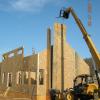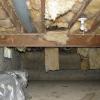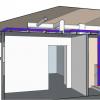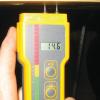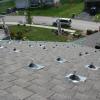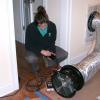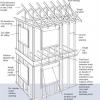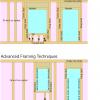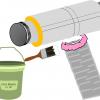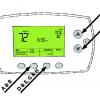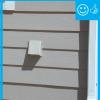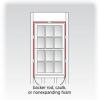Image Gallery
|
Reference: The New American Home 2007 Orlando, Florida
Organization(s):
DOE
Case study of new home construction in the hot-humid climate. Save
Download |
Courtesy Of: Calcs Plus Save
Download |
Courtesy Of: Calcs Plus Save
Download |
Save
Download |
|
Organization(s):
CARB
Document intended for designers and installers of hydronic heating systems interested in maximizing the overall system efficiency of condensing boilers when coupled with baseboard convectors. It is applicable to new and retrofit projects. Save
Download |
Organization(s):
PNNL, ORNL
Guide describing measures that builders in the cold and very cold climates can take to build homes that have whole-house energy savings of 40% over the Building America benchmark with no added overall costs for consumers. Save
Download |
Organization(s):
CARB, Steven Winter Associates
Information sheet about air barriers. Save
Download |
Save
Download |
|
Save
Download |
Courtesy Of: Gary Klein Save
Download |
Courtesy Of: Calcs Plus Save
Download |
Courtesy Of: Calcs Plus Save
Download |
|
Reference: Energy Savers: Geothermal Heat Pumps
Organization(s):
DOE
Online reference containing general information about geothermal heat pumps. Save
Download |
Reference: Energy Savers: Geothermal Heat Pumps
Organization(s):
DOE
Online reference containing general information about geothermal heat pumps. Save
Download |
Courtesy Of: Calcs Plus Save
Download |
Reference: Energy Savers: Geothermal Heat Pumps
Organization(s):
DOE
Online reference containing general information about geothermal heat pumps. Save
Download |
|
Reference: Building Science Insights: Advanced Framing
Organization(s):
BSC
Report detaining advanced framing techniques, including discussion of cost and energy savings. Save
Download |
Courtesy Of: Calcs Plus Save
Download |
Organization(s):
EPA
Guide describing details that serve as a visual reference for each of the line items in the Water Management System Builder Checklist. Save
Download |
Courtesy Of: Calcs Plus Save
Download |
|
Courtesy Of: Calcs Plus Save
Download |
Courtesy Of: Calcs Plus Save
Download |
Organization(s):
National Research Council Canada
Research study evaluating the dynamic heat transmission characteristics through two identical Insulating Concrete Form (ICF) wall assemblies in Ottawa, Canada. Save
Download |
Save
Download |
|
Reference: Measure Guideline: Replacing Single-Speed Pool Pumps with Variable Speed Pumps for Energy Savings
Organization(s):
BARA, NREL
Research study showing that for a relatively small investment, a variable speed pool pump can reduce pool pump energy use by 50% to 75%. Save
Download |
Reference: Measure Guideline: Deep Energy Enclosure Retrofit (DEER) for Zero Energy House (ZERH) Flat Roofs
Organization(s):
BSC
This Measure Guideline provides design and construction information for a deep energy enclosure retrofit solution of a flat roof assembly. Save
Download |
Save
Download |
Save
Download |
|
Organization(s):
Georgia Department of Community Affairs
Georgia state's minimum standard energy code, including state supplements and amendments. Save
Download |
Organization(s):
Georgia Department of Community Affairs
Georgia state's minimum standard energy code, including state supplements and amendments. Save
Download |
Save
Download |
Organization(s):
BSC
Save
Download |
|
Reference: Supplemental Humidity Control
Organization(s):
BSC
Information sheet offering general recommendations on supplemental humidity control and outlines viable system configurations. Save
Download |
Save
Download |
Organization(s):
BSC
Save
Download |
Save
Download |
|
Save
Download |
Reference: Best Practices Series Volume 16: 40% Whole-House Energy Savings in the Mixed-Humid Climate
Organization(s):
PNNL, ORNL
Report describing measures that builders in mixed-humid climates can use to build homes that have whole-house energy savings of 40% over the Building America benchmark with no added overall costs for consumers. Save
Download |
Courtesy Of: Calcs Plus Save
Download |
Save
Download |
|
Courtesy Of: Calcs Plus Save
Download |
Reference: Energy Savers: Geothermal Heat Pumps
Organization(s):
DOE
Online reference containing general information about geothermal heat pumps. Save
Download |
Reference: Solar Water Heaters
Organization(s):
DOE
Website describing how solar water heaters -- also called solar domestic hot water systems -- can be a cost-effective way to generate hot water for your home. Save
Download |
Reference: Mass Save Deep Energy Retrofit Builder Guide
Organization(s):
BSC
Guidebook providing useful examples of high performance retrofit techniques for the building enclosure of wood frame residential construction in a cold and somewhat wet climate. Save
Download |
|
Save
Download |
Organization(s):
EPA
Guide describing details that serve as a visual reference for each of the line items in the Thermal Enclosure System Rater Checklist. Save
Download |
Organization(s):
EPA
Guide describing details that serve as a visual reference for each of the line items in the Thermal Enclosure System Rater Checklist. Save
Download |
Organization(s):
EPA
Guide describing details that serve as a visual reference for each of the line items in the Thermal Enclosure System Rater Checklist. Save
Download |
|
Organization(s):
EPA
Guide describing details that serve as a visual reference for each of the line items in the Thermal Enclosure System Rater Checklist. Save
Download |
Organization(s):
EPA
Guide describing details that serve as a visual reference for each of the line items in the Thermal Enclosure System Rater Checklist. Save
Download |
Reference: Advanced Wall Framing
Organization(s):
NAHB, Southface Energy Institute, ORNL, NREL
Information sheet about advanced wall framing. Save
Download |
Reference: Advanced Wall Framing
Organization(s):
NAHB, Southface Energy Institute, ORNL, NREL
Information sheet about advanced wall framing. Save
Download |
|
Reference: Building Plans for Advanced Framing
Organization(s):
Green Building Advisor
Information sheets containing plans and details for advanced framing. Save
Download |
Save
Download |
Save
Download |
Save
Download |
|
Courtesy Of: Calcs Plus Save
Download |
Courtesy Of: Jim Mackovyak Save
Download |
Courtesy Of: Jim Mackovyak Save
Download |
Save
Download |
|
Courtesy Of: Jim Mackovyak Save
Download |
Courtesy Of: Jim Mackovyak Save
Download |
Courtesy Of: Jim Mackovyak Save
Download |
Courtesy Of: Jim Mackovyak Save
Download |
|
Courtesy Of: Jim Mackovyak Save
Download |
Save
Download |
Save
Download |
Save
Download |
|
Save
Download |
Courtesy Of: Calcs Plus Save
Download |
Organization(s):
EPA
Guide describing details that serve as a visual reference for each of the line items in the Thermal Enclosure System Rater Checklist. Save
Download |
Courtesy Of: Calcs Plus Save
Download |
|
Save
Download |
Organization(s):
EPA
Guide describing details that serve as a visual reference for each of the line items in the Thermal Enclosure System Rater Checklist. Save
Download |
Reference: Building America Best Practices Series, Volume 10: Retrofit Techniques and Technologies: Air Sealing
Organization(s):
PNNL, ORNL
Report identifying the steps to take, with the help of a qualified home performance contractor, to seal unwanted air leaks while ensuring healthy levels of ventilation and avoiding sources of indoor air pollution. Save
Download |
Save
Download |
|
Save
Download |
Organization(s):
EPA
Guide describing details that serve as a visual reference for each of the line items in the Thermal Enclosure System Rater Checklist. Save
Download |
Organization(s):
EPA
Guide describing details that serve as a visual reference for each of the line items in the Thermal Enclosure System Rater Checklist. Save
Download |
Organization(s):
EPA
Guide describing details that serve as a visual reference for each of the line items in the Thermal Enclosure System Rater Checklist. Save
Download |
|
Organization(s):
EPA
Guide describing details that serve as a visual reference for each of the line items in the Thermal Enclosure System Rater Checklist. Save
Download |
Organization(s):
EPA
Guide describing details that serve as a visual reference for each of the line items in the Thermal Enclosure System Rater Checklist. Save
Download |
Organization(s):
EPA
Guide describing details that serve as a visual reference for each of the line items in the Thermal Enclosure System Rater Checklist. Save
Download |
Organization(s):
EPA
Guide describing details that serve as a visual reference for each of the line items in the Thermal Enclosure System Rater Checklist. Save
Download |
|
Reference: Building America Best Practices Series, Volume 10: Retrofit Techniques and Technologies: Air Sealing
Organization(s):
PNNL, ORNL
Report identifying the steps to take, with the help of a qualified home performance contractor, to seal unwanted air leaks while ensuring healthy levels of ventilation and avoiding sources of indoor air pollution. Save
Download |
Organization(s):
EPA
Guide describing details that serve as a visual reference for each of the line items in the Thermal Enclosure System Rater Checklist. Save
Download |
Organization(s):
EPA
Guide describing details that serve as a visual reference for each of the line items in the Thermal Enclosure System Rater Checklist. Save
Download |
Save
Download |
|
Organization(s):
PNNL, ORNL
Guide describing measures that builders in the cold and very cold climates can take to build homes that have whole-house energy savings of 40% over the Building America benchmark with no added overall costs for consumers. Save
Download |
Reference: Building America Best Practices Series, Volume 10: Retrofit Techniques and Technologies: Air Sealing
Organization(s):
PNNL, ORNL
Report identifying the steps to take, with the help of a qualified home performance contractor, to seal unwanted air leaks while ensuring healthy levels of ventilation and avoiding sources of indoor air pollution. Save
Download |
Reference: Building America Best Practices Series, Volume 10: Retrofit Techniques and Technologies: Air Sealing
Organization(s):
PNNL, ORNL
Report identifying the steps to take, with the help of a qualified home performance contractor, to seal unwanted air leaks while ensuring healthy levels of ventilation and avoiding sources of indoor air pollution. Save
Download |
Organization(s):
Southface Energy Institute
Document intended to help graphically demonstrate the air leakage provisions of section 402.4 of the 2009 IECC. Save
Download |
|
Organization(s):
EPA
Guide describing details that serve as a visual reference for each of the line items in the Thermal Enclosure System Rater Checklist. Save
Download |
Organization(s):
PNNL, ORNL
Guide describing measures that builders in the cold and very cold climates can take to build homes that have whole-house energy savings of 40% over the Building America benchmark with no added overall costs for consumers. Save
Download |
Organization(s):
EPA
Guide describing details that serve as a visual reference for each of the line items in the Thermal Enclosure System Rater Checklist. Save
Download |
Organization(s):
EPA
Guide describing details that serve as a visual reference for each of the line items in the Thermal Enclosure System Rater Checklist. Save
Download |
|
Organization(s):
EPA
Guide describing details that serve as a visual reference for each of the line items in the Thermal Enclosure System Rater Checklist. Save
Download |
Organization(s):
EPA
Guide describing details that serve as a visual reference for each of the line items in the Thermal Enclosure System Rater Checklist. Save
Download |
Organization(s):
EPA
Guide describing details that serve as a visual reference for each of the line items in the Thermal Enclosure System Rater Checklist. Save
Download |
Organization(s):
EPA
Guide describing details that serve as a visual reference for each of the line items in the Thermal Enclosure System Rater Checklist. Save
Download |







